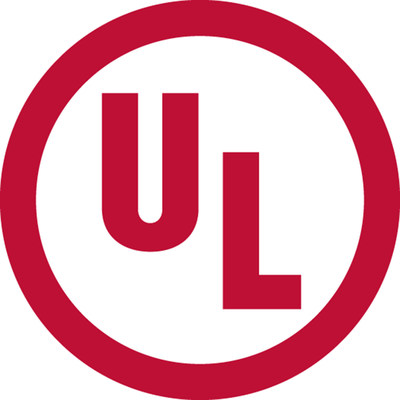"Standard Method for Testing and Assessing Particle and Chemical Emissions from 3D Printers" is now available for use
ATLANTA, Feb. 5, 2019 — (PRNewswire) — UL Chemical Safety would like to announce that ANSI/CAN/UL 2904, "Standard Method for Testing and Assessing Particle and Chemical Emissions from 3D Printers," has been published and is now available for use by stakeholders seeking to mitigate indoor air pollution risks associated with 3D printer emissions.
ANSI/CAN/UL 2904 contains measurement and assessment protocols for the emissions of particles and volatile chemicals from diverse 3D printers, print media, and print applications. The Standard applies to freestanding 3D printers that are typically found in schools, offices, libraries, homes, and other non-industrial indoor spaces, and should be used by stakeholders associated with these products to mitigate indoor air pollution hazards.
According to Phil Piqueira, VP of Standards for UL, "ANSI/CAN/UL 2904 will advance the availability of low emission printers and print media for use in the global marketplace. UL is proud to offer its first safety Standard addressing chemical pollution and reducing its impact on human health."
In November 2018, UL Chemical Safety and Georgia Institute of Technology (Georgia Tech) published results from an in-depth, two-year research period on 3D printers. According to UL Chemical Safety and Georgia Tech's research, many desktop 3D printers generate ultrafine particles (UFPs) while in operation. UFPs may pose a health concern since they are the size of nanoparticles and may be inhaled and penetrate deep into the human pulmonary system.
The research also revealed that more than 200 different volatile organic compounds (VOCs), many of which are known or suspected irritants and carcinogens, can be released while 3D printers are in operation.
Research shows that many machine factors, including nozzle temperature, filament type, filament and printer brand, and filament color, affect emissions while extrusion temperature, filament material and filament brand were found to have the greatest impact on emission levels. However, there is currently little marketplace information available to help users choose safer options.
"The new Standard allows manufacturers and users of 3D printers to have the assurance that printers have been tested and shown to meet low emission criteria for small particles and volatile chemicals that can affect human heath," according to Dr. Marilyn Black, VP and Senior Technical Advisor for UL.
UL Chemical Safety and Georgia Tech have summarized their research in four scientific reports on 3D printers and emissions. Two scientific research papers, " Characterization of particle emissions from consumer fused deposition modeling 3D printers" and " Investigating particle emissions and aerosol dynamics from a consumer fused deposition modeling 3D printer with a lognormal moment aerosol model," have been published in Aerosol Science and Technology.
ANSI/CAN/UL 2904 is now available for digital download and hard copy purchase through UL Standards' sales website.
To find out more about UL Chemical Safety and its 3D printing initiative, visit www.ulchemicalsafety.org.
About UL Chemical Safety
UL Chemical Safety conducts and communicates data driven research as an initiative of Underwriters Laboratories Inc., a not-for-profit organization that advances knowledge to address the important and emerging safety challenges of today's world. We conduct independent research on health and well-being, analyze data, convene experts worldwide to address risks, share knowledge, and support standards development for safe commercialization and use of evolving technologies. To learn more about us, visit www.ulchemicalsafety.org.
About UL
UL fosters safe living and working conditions for people everywhere through the application of science to solve safety, security and sustainability challenges. The UL Mark engenders trust enabling the safe adoption of innovative new products and technologies. Everyone at UL shares a passion to make the world a safer place. We test, inspect, audit, certify, validate, verify, advise and train, and we support these efforts with software solutions for safety and sustainability. To learn more about us, visit http://www.ul.com.
CONTACT: Gillan Ritchie
Research Communications Specialist
UL Chemical Safety Research
T: (678) 444.4035
![]() View original content to download multimedia:
http://www.prnewswire.com/news-releases/ul-publishes-ansicanul-2904-standard-for-3d-printers-300789173.html
View original content to download multimedia:
http://www.prnewswire.com/news-releases/ul-publishes-ansicanul-2904-standard-for-3d-printers-300789173.html
SOURCE Underwriters Laboratories Inc.
| Contact: |
| Company Name: Underwriters Laboratories Inc.
|









